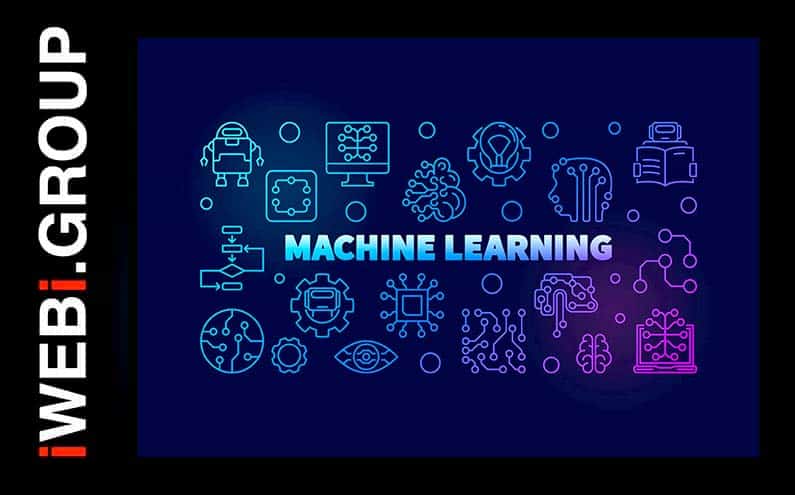Machine learning (ML) is a type of artificial intelligence (AI) that provides computers with the ability to learn without being explicitly programmed. It involves the construction of algorithms that can learn from and make predictions or decisions based on data. These algorithms operate by building a model from input features to make data-driven predictions or decisions, rather than following strictly static program instructions. Jean-Philippe Courtois, President of Global Sales, Marketing, and Operations of Microsoft said at the Artificial Intelligence Journey (AI Journey), an international conference on artificial intelligence and data analysis, that the COVID-19 pandemic has boosted interest in using machine learning: 80% of companies are already implementing it in their activities, and 56% plan to increase investment in this area.
Here are some of the key machine-learning technologies:
- Supervised Learning: This involves training a model on a labeled dataset, i.e., a dataset with clear indications of what the output for a given input should be. The model is then capable of making predictions for unseen data.
- Unsupervised Learning: This involves training a model on an unlabeled dataset. The model attempts to infer the underlying structure of the data by looking for patterns or similarities among the input features.
- Reinforcement Learning: This involves training a model to make a series of decisions. The model gets feedback in terms of rewards or penalties and aims to maximize the total reward over time.
- Deep Learning: This is a subfield of machine learning that uses neural networks with many layers (hence ‘deep’), enabling the learning of complex patterns in large amounts of data.
- Natural Language Processing (NLP): This involves the application of machine learning to the problem of understanding human language. It’s the technology behind services like speech recognition, language translation, and sentiment analysis.
- Computer Vision: This involves the application of machine learning to the interpretation and understanding of visual data, such as images or video.
- Transfer Learning: This is a machine learning method where a pre-trained model is used as a starting point for a model on a second task. It is a popular approach in deep learning where pre-trained models are used as the basis for complex and large-scale tasks.
- Ensemble Learning: This involves training multiple models (often of differing types) and combining their predictions in some way to create a final prediction. This technique can help improve the robustness and accuracy of predictions.
There are numerous machine learning libraries and frameworks like TensorFlow, PyTorch, Scikit-Learn, Keras, etc., which facilitate the development and implementation of machine learning models.
Modern machine learning consists of three parts:
- Algorithms that tell the computer which sources to use to solve the problem.
- Datasets This is the memory of the machine, which contains information about the previous experience of solving the problem.
- Signs – individual parameters.
Artificial intelligence in search results should solve the problems of classification, clustering, and identification of the requested information. Google and Yandex are also trying to make forecasts in this area. That is, the robot studies what requests were made for a certain time and, upon receipt of a related request, displays pages that offer related topics. There is a high probability that they will interest the user. Clicks on certain resources give the machine the knowledge of what a person’s preferences are in order to provide them with the right answers to requests, as well as offer services that may be of interest to them.
Thanks to artificial intelligence in search engines, advertising has become more targeted, which allows reducing the financial costs of business representatives and targeting the target audience.
It is worth taking a closer look at how machine learning works.
Types of machine learning
It is customary to divide all types of machine learning into three categories:
- with a teacher (supervised learning);
- without a teacher (unsupervised learning);
- with reinforcement (reinforcement learning).
Various software tools are used for teaching. The most advanced are:
- TensorFlow;
- Shogun;
- io;
- Rapid Miner;
- Google Cloud ML Engine
- Amazon Machine Learning (AML);
- NET;
- Apache Mahout;
- Microsoft Azure ML.
All of them have their own characteristics. The main differences are in the programming languages used and compatibility with certain operating systems. Each tool is sharpened to solve narrowly focused tasks.
It’s worth considering in more detail each model of a search robot learning
Learning with a teacher
This method is very reminiscent of teaching a child, but instead of parents and teachers, there are algorithms that are given to the search robot. That is, when a certain task arises, it searches in its memory for what needs to be done in a particular case.
The algorithm does not allow one to find the right answer, but it helps the machine understand why it is necessary to do this by identifying relationships. As a result, the search robot can make correct predictions, the accuracy of which is quite high, which allows one to get the necessary web pages with the content of interest.
Learning without a teacher
In this case, the robot independently processes large amounts of information in order to identify a pattern. The machine itself studies the information and draws conclusions.
Reinforcement learning
Here the robot needs to decide which algorithm to choose. Based on the algorithm, the result of the search results will change. Such robots in search engines are considered the most effective, but their implementation requires lengthy testing. They allow you to take into account the individual characteristics of the user and remember information, which is an advantage in the long run, as it reduces the time it takes to find the right pages.
As machine learning technology advances, it has certainly made our lives easier. However, implementing machine learning within businesses has also raised a number of ethical concerns surrounding AI technologies.

